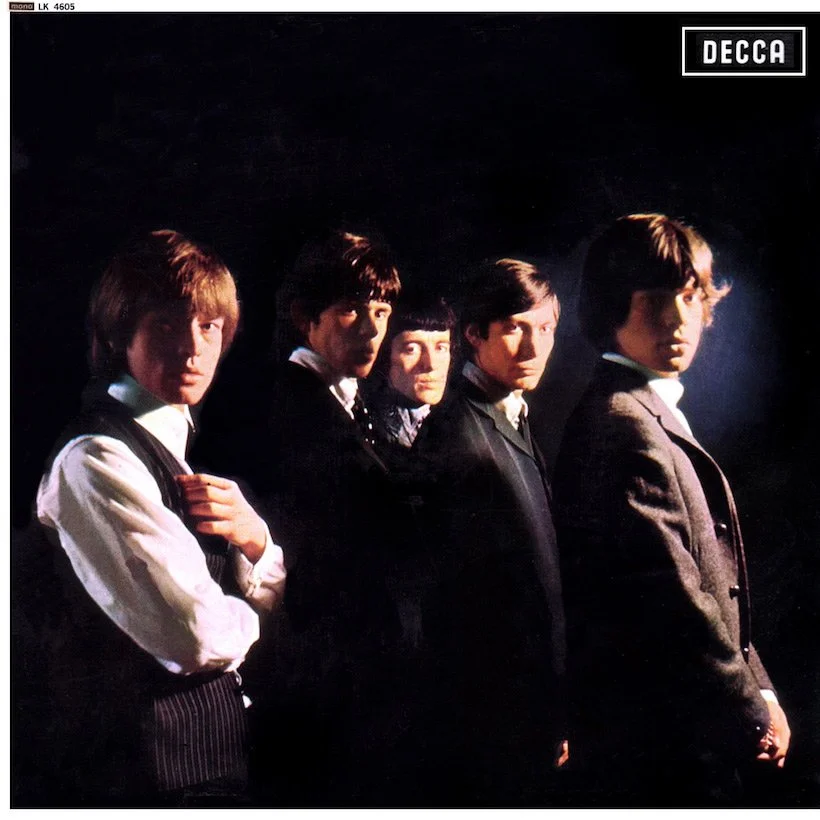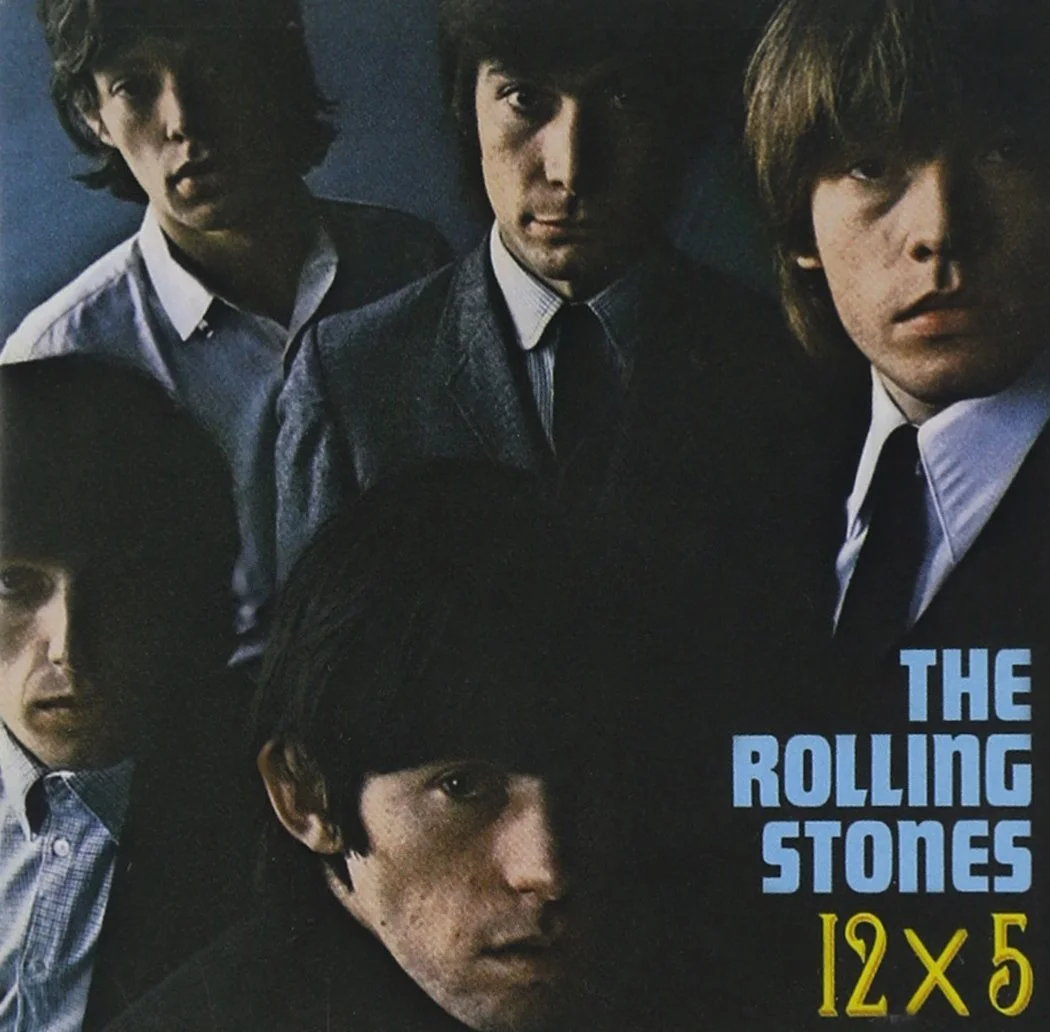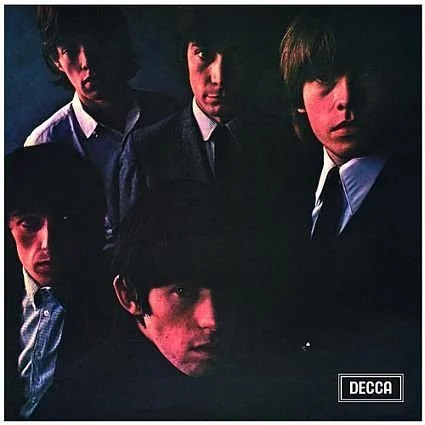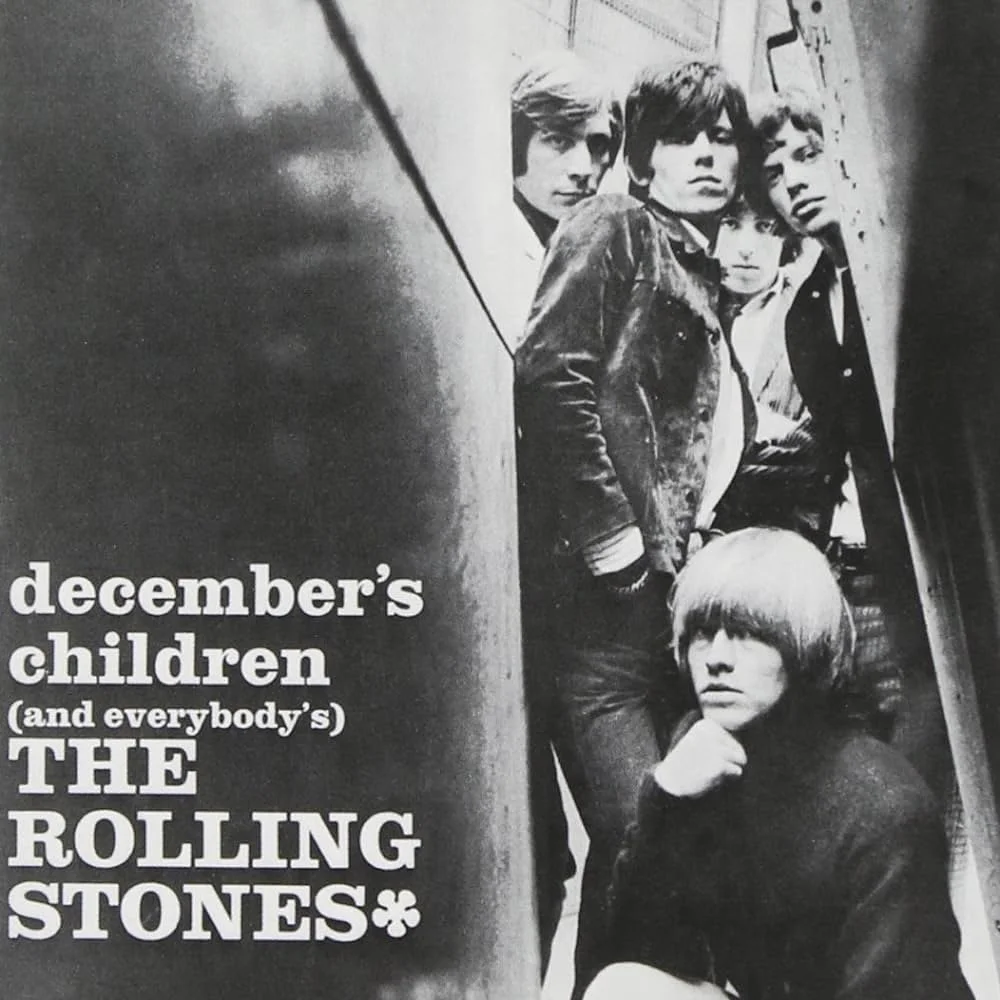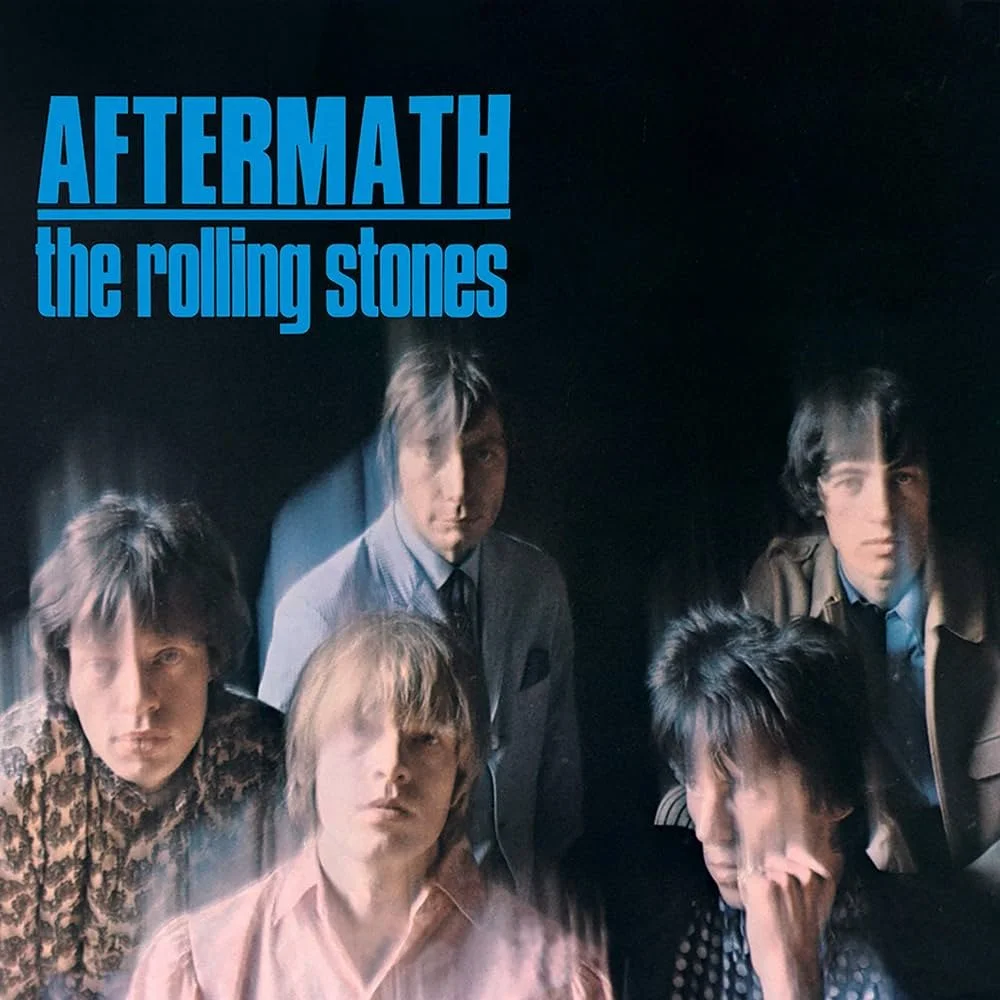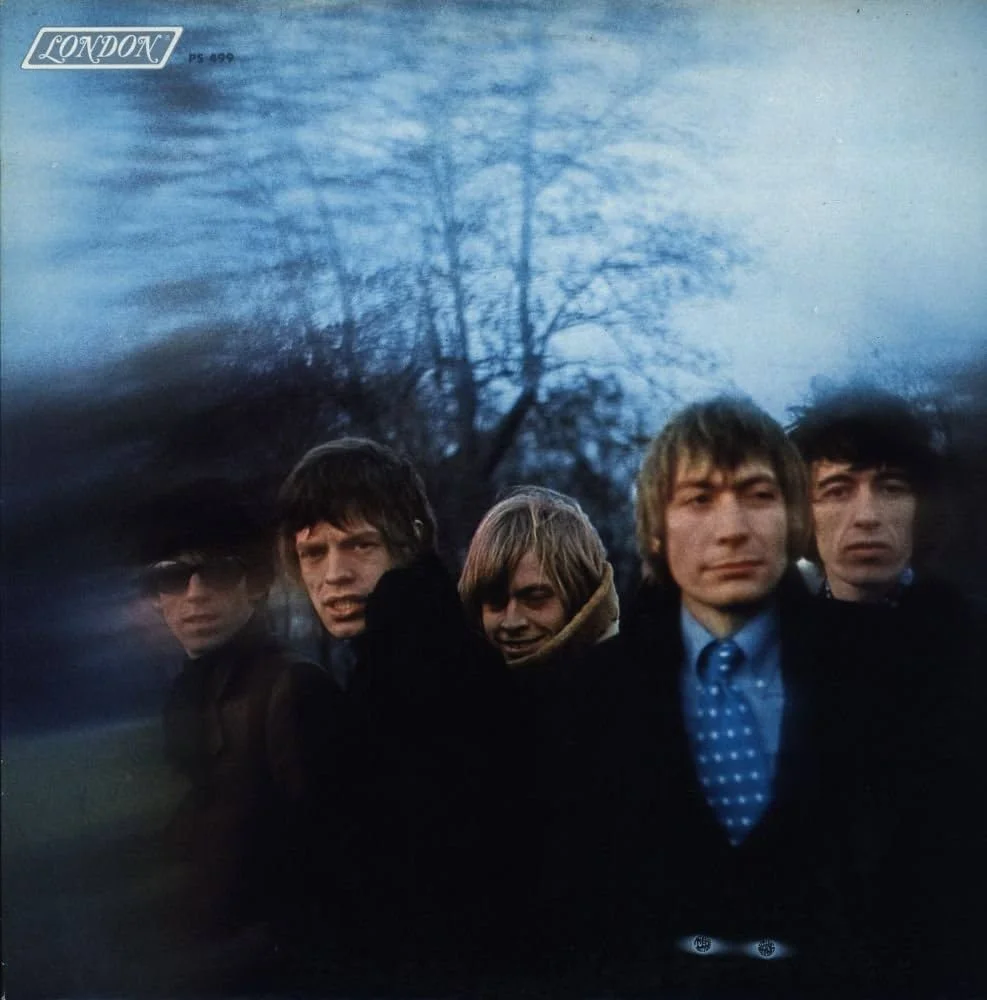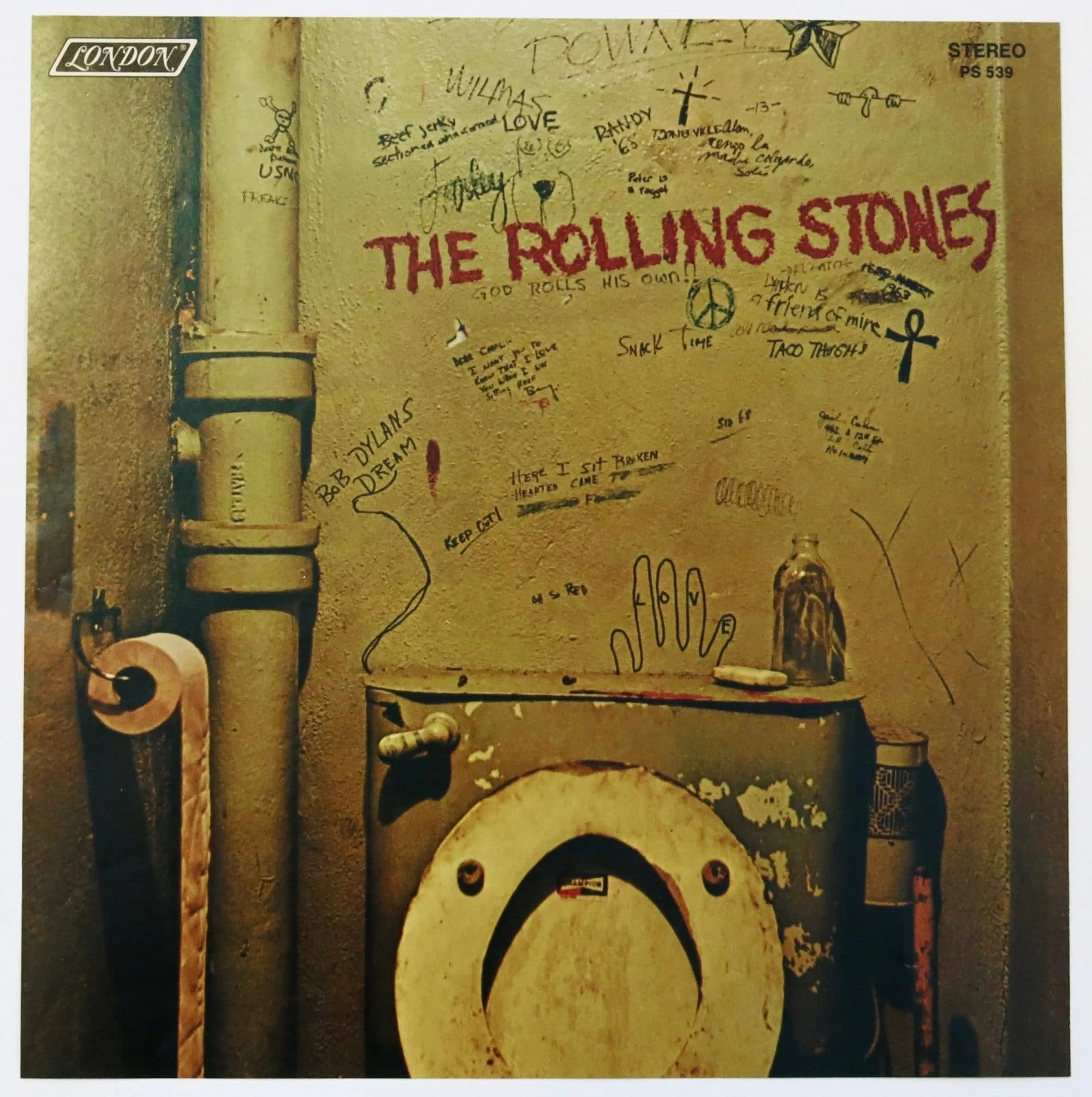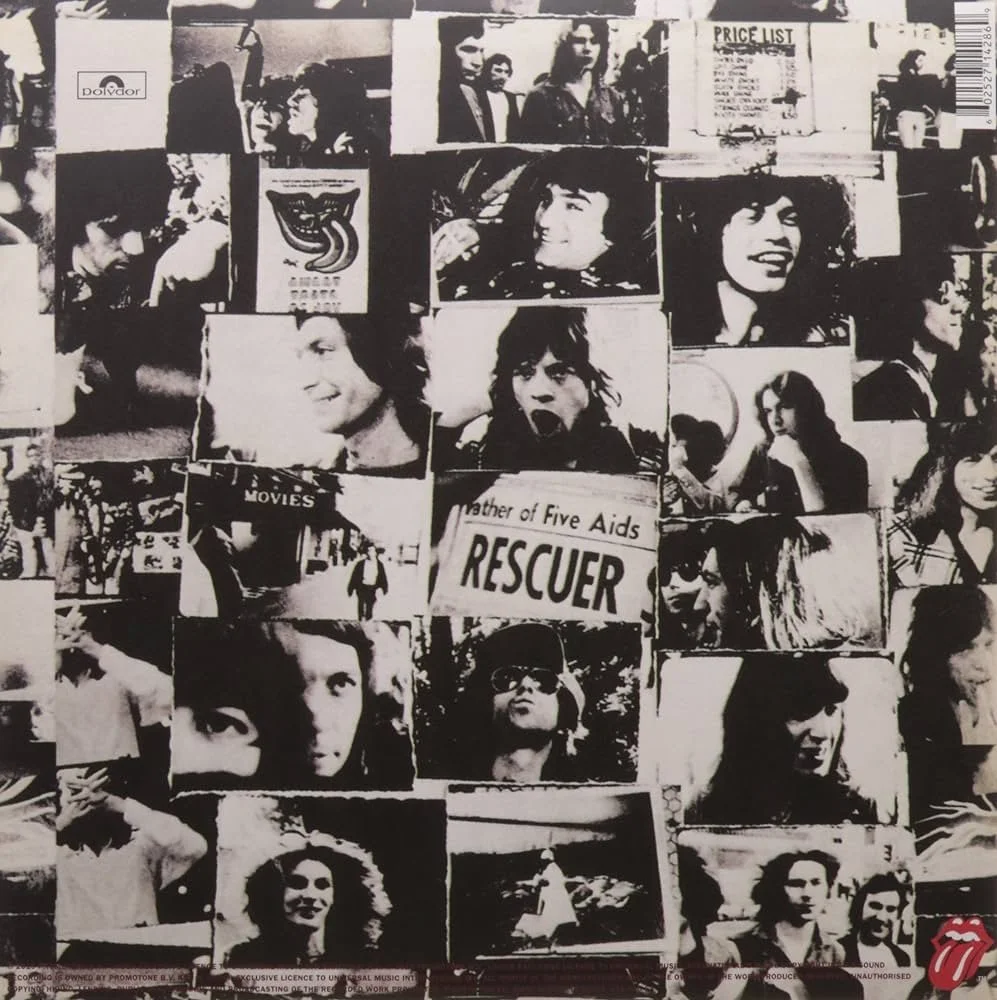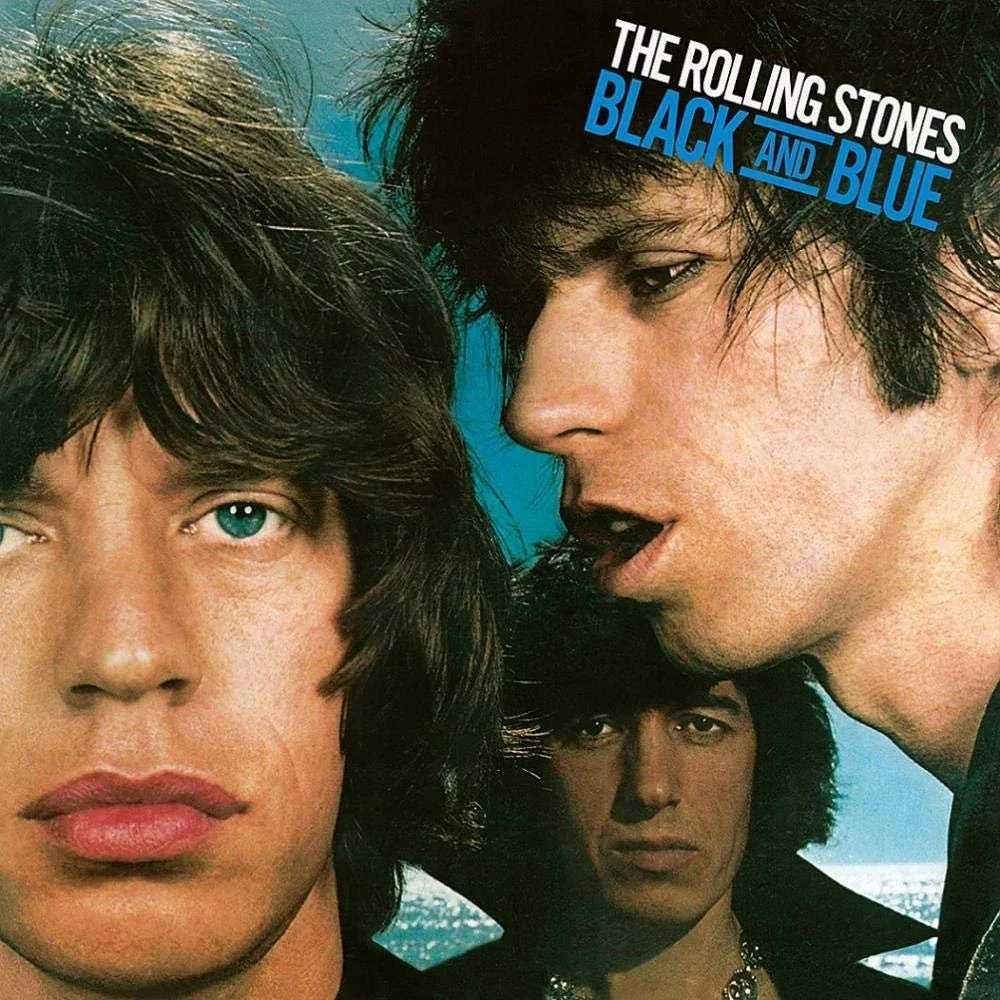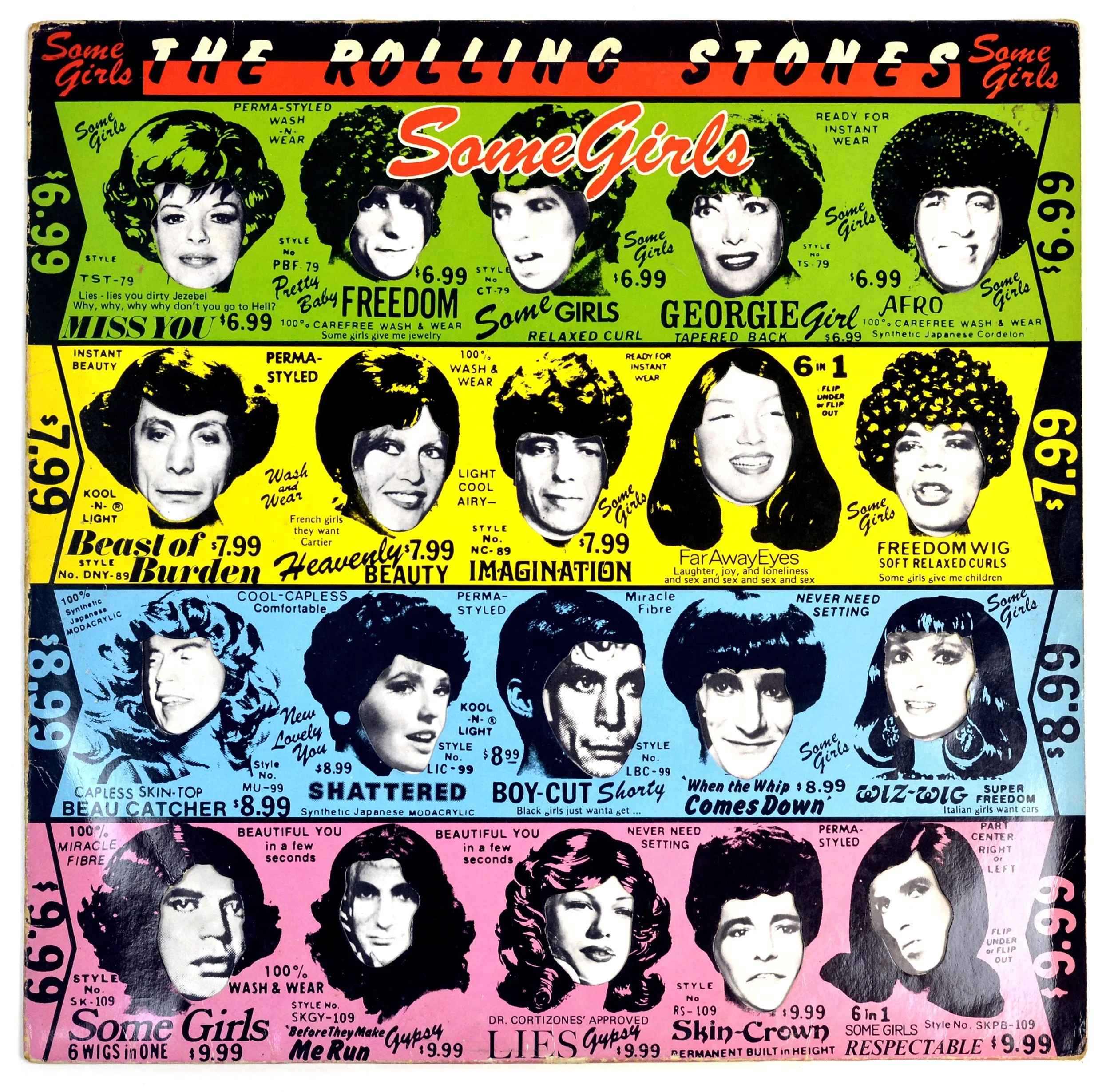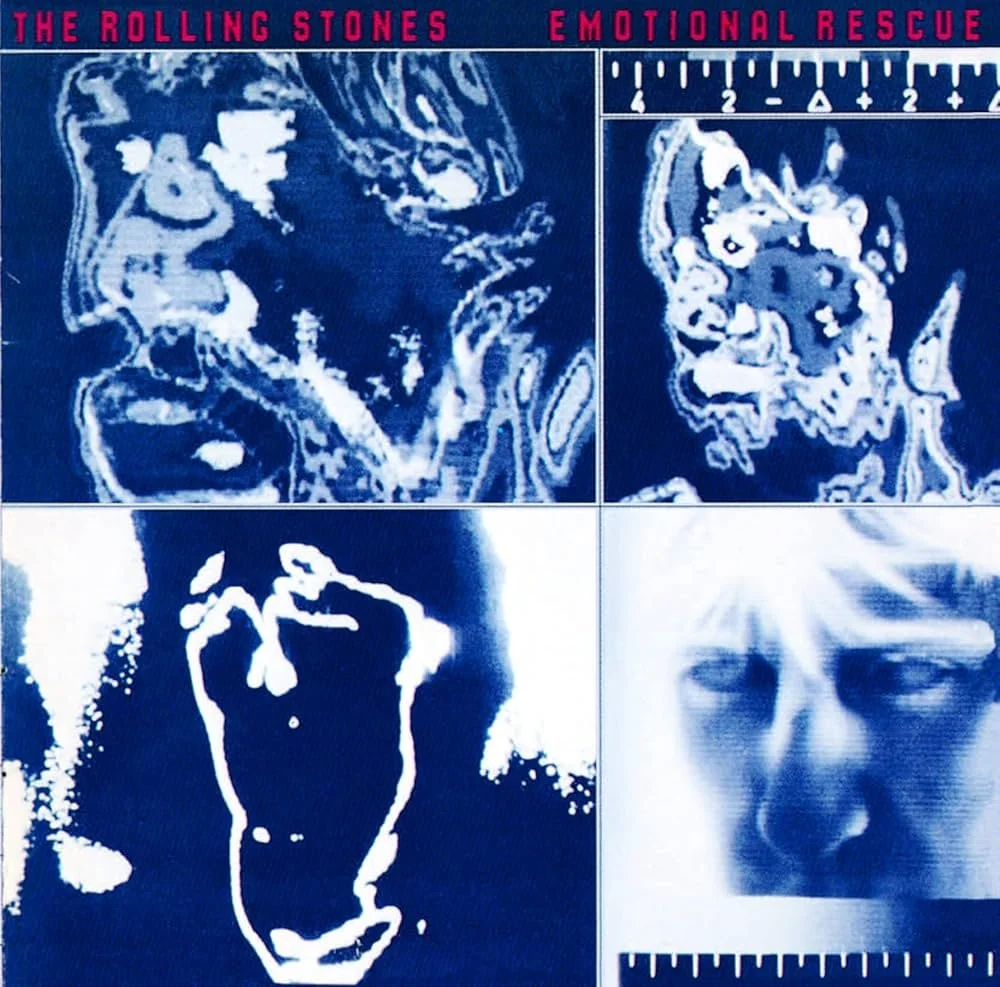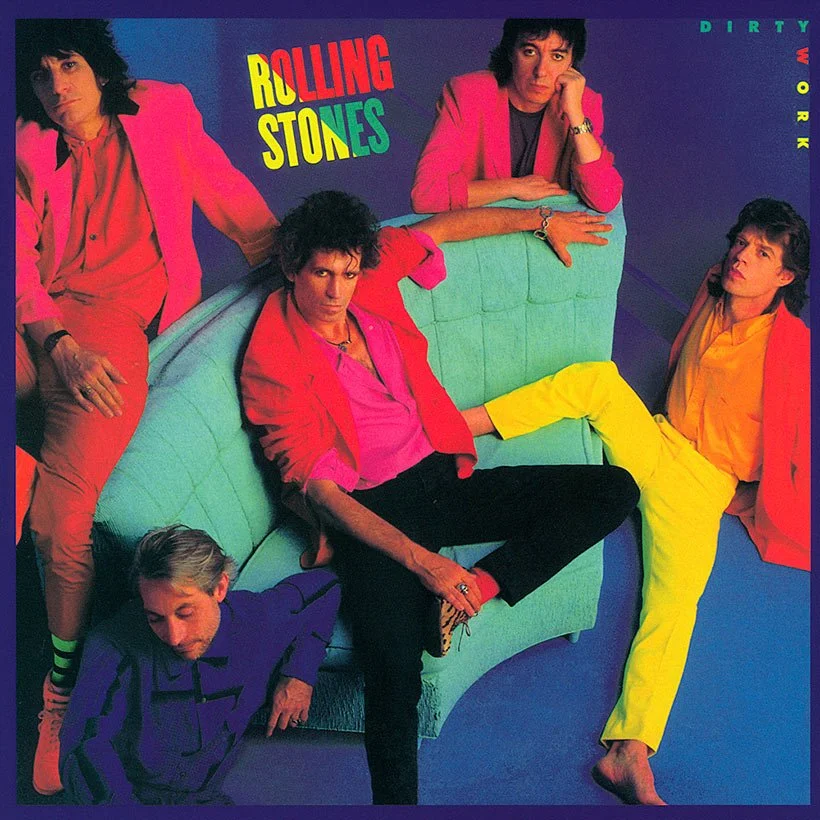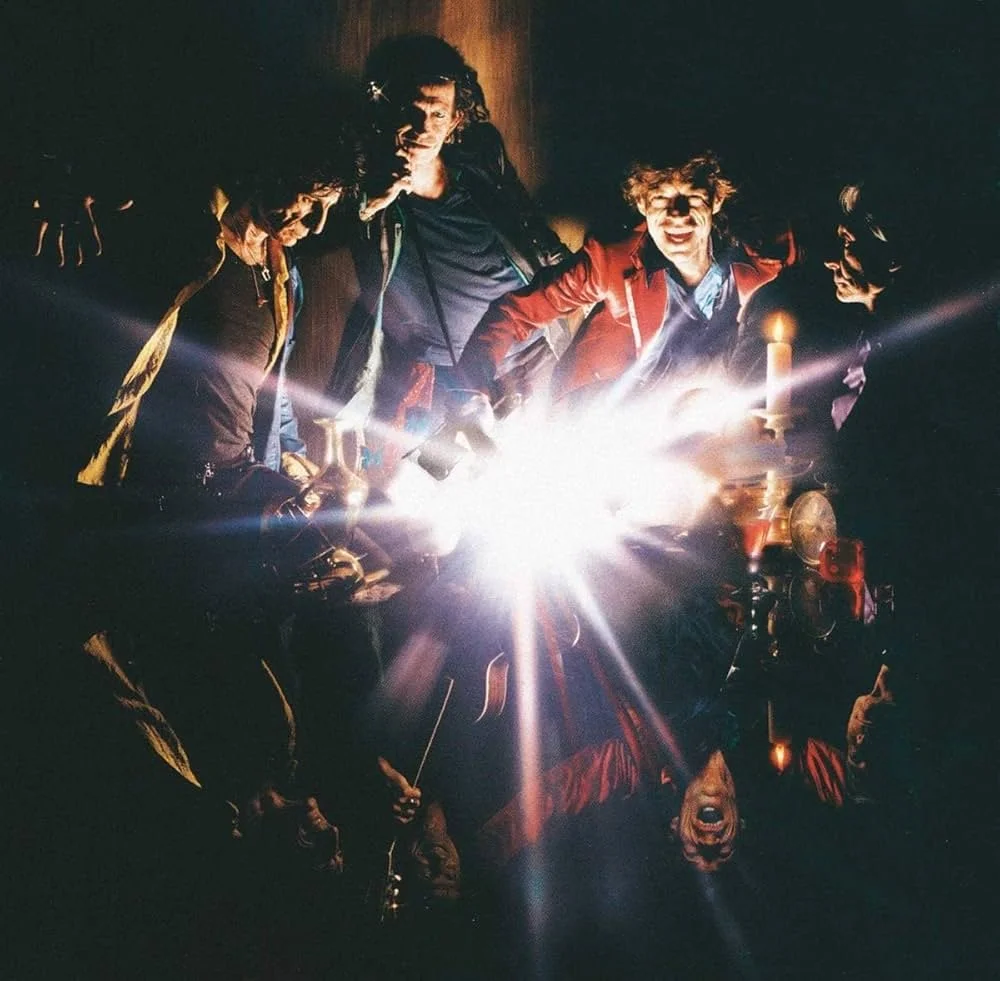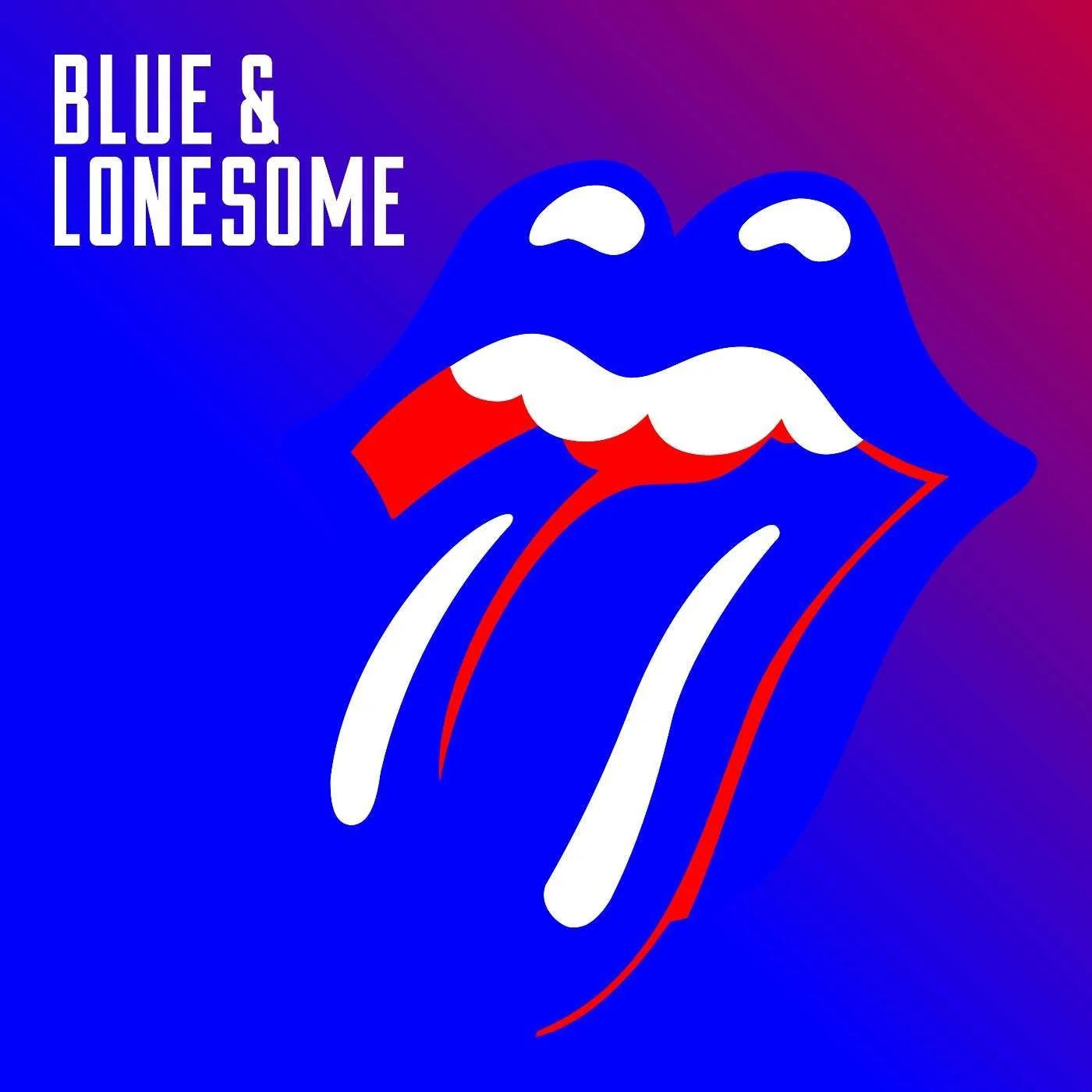The Rolling Stones: Album By Album
No name is more synonymous with the phrase “rock and roll” than The Rolling Stones. Just a glimpse of the band’s “Hot Lips” logo conjures images of stadium crowds reacting to Mick Jagger’s signature stage struts as he, guitarists Keith Richards and Ronnie Wood, and drummer Charlie Watts lead them through decades of rock and roll history. Rising to prominence during the British Invasion of rock acts with several albums primarily comprised of blues covers, The Rolling Stones have done it all: rhythm and blues, soul, psychedelia, reggae, dance, and anything else that would fit under the “rock” umbrella can be found throughout the band’s twenty-plus album catalog.
From the release of their 1964 debut album to the 2023 epic Hackney Diamonds, The songwriting prowess of Jagger/Richards has stood the test of time. Join us as we take a look at one of rock and roll’s most iconic acts, album by album.
The Rolling Stones (UK)
England’s Newest Hit Makers (US)
Release Date: April 17th, 1964 (May 29th, 1964 in US)
Label: Decca
Producers: Eric Easton, Andrew Loog Oldham
Mick Jagger: vocals
Keith Richards: guitar
Brian Jones: guitar
Bill Wyman: bass
Charlie Watts: drums
1964 marked a massive year for the “British Invasion” of rock and roll. In February, The Beatles would change the face of rock music with an appearance on The Ed Sullivan Show, seen by over 73 million people. Just two months later, a group of five young men from England would be introduced to the world as The Rolling Stones when their debut album was released.
Recorded over five days in January and February of 1964, The Rolling Stones (known as England’s Newest Hit Makers in the US) was the band’s introduction, showcasing a love of rhythm and blues music over twelve tracks. Covers of Bobby Troup, Chuck Berry, Willie Dixon and Jimmy Reed were found throughout the album, with only one original song from the burgeoning songwriting duo of Keith Richards and Mick Jagger, “Tell Me (You’re Coming Back)”. It would take many years before the band would venture fully into original compositions, but new fans would get a taste of their stylings as the 1960s progressed. A slightly different track list appeared on the US release.
For several years, The Rolling Stones released a slew of albums, mainly of blues covers and a few original hits sprinkled in for good measure, but diehard music fans will notice that the UK and US received different versions. Track listings would be rearranged, live versions would be included instead of studio tracks, and it could often confuse new listeners. It wouldn’t be until 1967’s psychedelic entry Their Satanic Majesties Request that the band released albums with uniform track listings on both continents.
12x5 (US)
Release Date: November 1965
Label: London/Decca/ABKCO
Producer: Andrew Loog Oldham
Mick Jagger: vocals
Keith Richards: guitar
Brian Jones: guitar
Bill Wyman: bass
Charlie Watts: drums
The Rolling Stones were hitting it big in America, and they needed to follow the success of their debut. To continue riding that wave, the band took their UK-released EP Five By Five and expanded upon it to create 12x5, their second American release. Much like the previous record, it is chock full of rhythm and blues covers, highlighting their love of artists like Chuck Berry.
The initial Five by Five EP was recorded over several sessions in Chicago during June 1964. The EP was not yet a popular format in the United States, so their American distributor, London Records, decided to add seven new songs to the previous five to fit the album requirement they had set: 12 songs by five musicians. In addition to the covers, the album featured two Jagger/Richards contributions (“Congratulations”, “Grown Up Wrong”) and two full-band compositions written under the pseudonym “Nanker Phelge” (“Empty Heart”, “2120 South Michigan Avenue”).
The Rolling Stones No. 2 (UK)
12x5 (US)
Release Date: January 15th, 1965 (November for US)
Label: London/Decca/ABKCO
Producer: Andrew Loog Oldham
Mick Jagger: vocals
Keith Richards: guitar
Brian Jones: guitar
Bill Wyman: bass
Charlie Watts: drums
Co-opting the same album artwork from the American 12x5 release, The Rolling Stones No. 2 followed up the band’s self-titled effort in England, which the band indulging in handfuls of rock and blues covers. Much like its predecessors, Jagger and Richards included a handful of original compositions, giving fans a taste of the musical stylings that would follow in later years. “What A Shame”, “Grown Up Wrong”, and “Off The Hook” were sandwiched in amongst covers from Allen Toussaint, Muddy Waters, Jerry Leiber, Artie Butler, and Jerry Wexler.
The Rolling Stones, Now! (US)
Release Date: March 1965
Label: London
Producer: Andrew Loog Oldham
Mick Jagger: vocals
Keith Richards: guitar
Brian Jones: guitar
Bill Wyman: bass
Charlie Watts: drums
The Rolling Stones, Now! is where it can get a bit confusing when tracking the band’s discography, given that the UK and US releases of their albums were each varied in track listings. The Rolling Stones, Now! acted as the band’s third American studio album, and it mainly featured songs that were released earlier in the United Kingdom.
The original song count from Jagger/Richards was moving up, with the iconic duo contributing four tracks: “Heart of Stone”, “What A Shame”, “Off The Hook” and “Surprise, Surprise”. Covers from Jerry Leiber and Artie Butler, Bo Diddley, and Willie Dixon (among many others) comprised the rest of the track listing, with all songs recorded between June 10th and November 8th of 1964, with recording time split between studios in Chicago and Hollywood (with the exception of “Mona”, which was tracked in London earlier that January).
Success was certainly catching up to the electric five-piece, as The Rolling Stones, Now! would chart at number five on the Billboard 200 and go on to become certified gold.
Out Of Our Heads
Release Date: July 30th, 1965
Label: London (US) / Decca (UK)
Producer: Andrew Loog Oldham
Mick Jagger: vocals
Keith Richards: guitar
Brian Jones: guitar
Bill Wyman: bass
Charlie Watts: drums
1965 would mark a turning point for The Rolling Stones with the release of Out of Our Heads. While the band would continue their tradition of recording rhythm and blues classics while throwing a few original compositions into the track list, one of these original songs would stand out amongst the others.
Out of Our Heads found the band taking some of their favorite rhythm and blues and soul tracks and putting them through a modern filter, making them more guitar driven and contemporary than their predecessor albums.
The U.S. version of the album included "The Last Time”, “The Spider and the Fly”, “One More Try”, and the band’s first number one hit, “(I Can’t Get No) Satisfaction”. To this day, it remains one of the band’s most popular songs and is widely considered one of the greatest Rolling Stones songs ever written. The UK edition would omit this song, including “Gotta Get Away”, “Heart of Stone” (initially released on The Rolling Stones, Now!) and “I’m Free”.
December’s Children (And Everybody’s) (US)
Release Date: December 3rd, 1965
Label: London
Producer: Andrew Loog Oldham
Mick Jagger: vocals
Keith Richards: guitar
Brian Jones: guitar
Bill Wyman: bass
Charlie Watts: drums
At the tail end of 1965, the band capitalized on the massive success of “(I Can’t Get No) Satisfaction” by releasing a compendium of tracks that hadn’t yet made it to the turntables of its U.S. audience. December’s Children (And Everybody’s) was “[not] an album, it’s just a collection of songs”, as Bill Wyman is quoted as remembering Mick Jagger saying.
Unlike other records in their catalog, there were no recording sessions for December’s Children, namely because, well, the songs had already been recorded. December’s Children is a compilation of tracks that were previously released in the UK, including the omitted selections from the UK release of Out of Our Heads, The Rolling Stones EP, a live EP titled Got Live If You Want It!, and two singles titled “The Singer Not The Song” and “Get Off Of My Cloud”.
Until 2016’s Blue & Lonesome, this would be the last Rolling Stones album to feature primarily covers.
Aftermath
Release Date: April 15th, 1966
Label: Decca (UK) / London (US)
Producer: Andrew Loog Oldham
Mick Jagger: vocals
Keith Richards: guitar
Brian Jones: guitar
Bill Wyman: bass
Charlie Watts: drums
Initially, Aftermath was going to be named Could You Walk On The Water?, but the Stones’ US label raised worries: the album could offend Christians in the US, given that the title alluded to Jesus walking on water. Given that just a month before the album released, John Lennon of The Beatles gave an interview where he stated that The Beatles were “bigger than Jesus”, London Records wanted to play it safe. Begrudgingly, the band agreed on a new title for their first album comprised of completely original material.
Rivaling the release of their contemporaries’ Rubber Soul, Aftermath was marked as the breakthrough album for The Rolling Stones, with the band starting to brand out of their Chicago blues influences and experimenting with genres such as country, psychedelia, Middle Eastern, and folk. Guitarist Brian Jones filled the album with instruments that were not typical to be heard in popular music, namely sitars, Appalachian dulcimers, Japanese koto, and marimbas.
Aftermath proved to be an immediate hit for the band in both the US and UK, with Jagger and Richards leaning into their songwriting capabilities and shaping the band that the world was coming to know and love. The US version of the album also spawned another number one hit and one of the band’s biggest songs to date: the ethereal, trippy 60s anthem known as “Paint It Black”.
Between The Buttons
Release Date: January 20th, 1967
Label: Decca
Producer: Andrew Loog Oldham
Mick Jagger: vocals
Keith Richards: guitar
Brian Jones: organ, electric guitar, recorder, vibraphone, tambourine, harmonica, dulcimer, kazoo, handclaps
Bill Wyman: bass
Charlie Watts: drums
By the time that Between The Buttons was beginning to be recorded, Brian Jones had gone from being solely a guitarist to being an experienced multi-instrumentalist. He became less interested in the electric guitar, and only ended up contributing guitar parts to one track on the American and British version.
Recorded over the course of five months in the second half of 1966, Between The Buttons is a wide-ranging effort from the Stones, marking the band’s last collaboration with longtime producer and manager Andrew Loog Oldham. The band meshed pop rock with psychedelics, baroque pop, and an eclectic array of influences to bring the release to life, with the album spawning the singles “Ruby Tuesday” and “Let’s Spend The Night Together”.
The 60s were more than halfway over, but the band had yet to make their trippiest entry.
Their Satanic Majesties Request
Release Date: December 8th, 1967
Label: Decca (UK) / London (US)
Producer: The Rolling Stones
Mick Jagger: vocals
Keith Richards: guitar
Brian Jones: melotron, saxophone, vibraphone, Jew’s harp and flute, organ, electric dulcimer, recorder, backing vocals, harp
Bill Wyman: bass
Charlie Watts: drums
If you were a fan of psychedelic music, then there’s a good chance you loved 1967. It’s impossible at times to not compare The Beatles and The Rolling Stones; they were the two biggest acts to emerge out of the British invasion, they are both still wildly popular to this day, and they were both rooted in blues and pop rock music before eventually expanding into genres that no one could have ever predicted. By June 1967, The Beatles had changed the face of contemporary rock music with the release of their magnum opus Sgt. Pepper’s Lonely Hearts Club Band. The Rolling Stones were planning their own, which would be released in December of that year, titled Their Satanic Majesties Request.
It is unlike any other record in the Stones’ sprawling catalog, and it is the most psychedelic-infused entry in the bunch. Opting to produce that album entirely themselves rather work with longtime producer Andrew Loog Oldham, the band worked from February to October of 1967 to deliver ten LSD-infused tracks that would continue to keep the band at the forefront of the American rock movement. The sessions were prolonged due to incidences of jail time and court-ordered appearances, along with the fact that most members would arrive at the studio will multiple guests and halt any productivity that was happening.
Even with these vast runs of experimentation, the album went on to land the number two spot on the Billboard 200, and was eventually certified gold in the United States.
Beggars Banquet
Release Date: December 6th, 1968
Label: Decca (UK) / London (US)
Producer: Jimmy Miller
Mick Jagger: vocalist
Keith Richards: guitar
Brian Jones: acoustic slide guitar, acoustic guitar, harmonica, Mellotron, sitar, tambura, backing vocals
Bill Wyman: bass
Charlie Watts: drums
Even with the at-times experimental nature of the album, Beggars Banquet was an apt synthesis of everything that the band had written and performed up to that point. It’s rooted in rhythm and blues, much like their past efforts, but the incorporation of Latin and South African sounds set them apart from their contemporaries. With Beggars Banquet, the band was beginning to fully mesh as a group, even with internal turmoil occurring.
Longtime reliable band leader Brian Jones was becoming noticeably absent from the band; drug use had unfortunately impeded his once-outstanding abilities as the co-founder and leader of the band. With Richards left to do both the rhythm and lead guitar parts throughout the album, the band found comfort working with producer Jimmy Miller, who would go on to helm some of the band’s biggest albums to date. Jones’ contributions are still there, however, as the band incorporated various degrees of Mellotron, sitar, and tambura into the songs.
Ten tracks long and opening with the anthemic “Sympathy for the Devil”, Beggars Banquet catapulted the Stones even further into the cultural zeitgeist, giving them the number five spot on the Billboard 200 and their first ever Platinum record in America. They had made it. But the best (and worst) was yet to come.
Let It Bleed
Release Date: November 28th, 1969
Label: Decca (UK) / London (US)
Producer: Jimmy Miller
Mick Jagger: vocals
Keith Richards: guitar
Brian Jones: guitar
Bill Wyman: bass
Charlie Watts: drums
The final year of the 1960s would mark a cultural turning point in America. The “hippie revolution” was ending, the Manson murders would occur that December and shake America, and The Rolling Stones would release both their best album yet (one that is still critically acclaimed to this day), lose their one of their longtime members to drug use, and play a concert that would change the trajectory of their band for years to come.
The sessions for Let It Bleed, fraught with internal tension due to the unreliable nature of co-founder and longtime guitarist Brian Jones, led to his dissolution from the band while simultaneously producing what many consider to be one of the greatest rock albums of all time. From those sessions, “Gimme Shelter”, “Let It Bleed” and “You Can’t Always Get What You Want”, among many others, would be etched in wax and catapult the band even further than they could have ever imagined. Sadly, Jones was dismissed from the band in June 1969 due to alcohol and drug-related issues. Less than a month later, he would be dead, drowned in his home swimming pool.
Days after its release, the band would head to the Altamont Speedway outside of Tracy, CA to perform at the Altamont Free Concert. The show, infamously captured on film in the documentary Gimme Shelter in 1970, was the source of much controversy as it was massively over-attended (over 300,000) and led to numerous deaths. One of these occurred the Stones performance later that night, in which a man attending the concert was killed by a member of the Hells Angels, who were working security for the event that evening.
The 1960s went out in a cloud of unbridled chaos, and yet the Stones were bigger than they had ever been. What would follow next would be several years of material that would take them from “biggest rock stars in the world” to “some of the biggest rock stars in human history”.
Sticky Fingers
Release Date: April 23rd, 1971
Label: Rolling Stones Records
Producer: Jimmy Miller
Mick Jagger: vocals
Keith Richards: guitar
Mick Taylor: guitar
Bill Wyman: bass
Charlie Watts: drums
Two years after the death of Brian Jones, The Rolling Stones would emerge with Sticky Fingers, their first album since their inception without Jones, and their first studio album with guitarist Mick Taylor. Their contract with Decca/London was up, and freedom awaited them. Rolling Stones Records was founded, and the band would go on to release their own albums as they pleased under the imprint.
The ten-track album would find Jagger, Richards, Taylor, Wyman and Watts venturing into hard rock while incorporating their traditional flare of roots rock and traditional rock and roll throughout. The incorporation of guitarist Mick Taylor would find the band stretching into jazz and country territory, making for a thoroughly entertaining entry. A cover of “You Gotta Move” by Fred McDowell and Gary Davis makes the cut of the album, while Jagger and Richards teamed up with Marianne Faithfull on “Sister Morphine”.
The album would eventually go on to score the number one chart spot in several countries around the world, and it would eventually be certified triple platinum in America. The album would also introduce the iconic tongue and lips logo, designed by Josh Pasche and modified by Craig Braun. The logo (used at the top of this article) would take the Rolling Stones from just another rock band to a universally-identifiable name in pop culture.
Exile on Main St.
Release Date: May 12th, 1972
Label: Rolling Stone Records
Producer: Jimmy Miller
Mick Jagger: vocals
Keith Richards: guitar
Mick Taylor: guitar
Bill Wyman: bass
Charlie Watts: drums
Exile on Main St. is coveted by many as The Rolling Stones’ grand masterpiece. Recorded over a period of three years in London, South France, and Los Angeles, you can feel that this a band at their first throughout the hour long double-album, the first double-album in the band’s discography. You can practically feel the sweat dripping off the instruments, the heat building up in the studio room as the band jamming out for hours on end in mobile recording studio in Nellcôte. Lyrical themes of hedonism and sex were explored against a backdrop of blues rock, country, swing, and gospel, making it an eclectic, loose, yet entirely focused album. In that trailer, they would enter as the Rolling Stones, but they would exit as one of the greatest acts in rock history.
Even with personal issues going on in the lives of the members, Exile on Main St emerged as one of the band’s finest (if not their best) entry. Even in moments of absolute chaos, beauty can blossom, and Exile is proof of that method of madness. While initially panned and dismissed at the time of its release, in only a few years’ time, it would go on to be considered the band’s best entry.
Goats Head Soup
Release Date: August 31st, 1973
Label: Rolling Stones REcords
Producer: Jimmy Miller
Mick Jagger: vocals
Keith Richards: guitar
Mick Taylor: guitar
Bill Wyman: bass
Charlie Watts: drums
The last of the Jimmy Miller-produced Stones' albums was Goats Head Soup. Settling down at Dynamic Studios in Kingston, Jamaica in November 1972, the band got to work and found that the method they had elected to use on Exile on Main St.’s recording process had worked. Rather than get into the studio with pre-planned material and begin to track everything, the band elicited to get into the studio for a month, with rooms booked for twenty-four hours a day so that the band could write as freely as they pleased. These sessions would eventually lead to songs pouring out, like water flowing from a tap. Within months, the album would be completely written and the sessions finished by May 1973.
The songs on the album found Jagger and Richards looking inward, reflecting more on life, love, and loss, with more specific topics than previous albums. Jagger stated in an interview at the time of its release that “I really feel close to this album, and I really put all I had into it… I guess it comes across that I’m more into songs. It wasn’t as vague as [Exile on Main St.] which kind of went on so long that I didn’t like some of the things. There’s more thought to this one…I didn’t want it to be just a bunch of rock songs.”
It’s Only Rock ‘n Roll
Release Date: October 18th, 1974
Label: Rolling Stones Records
Producer: The Gilmmer Twins
Mick Jagger: vocals
Keith Richards: guitar
Mick Taylor: guitar
Bill Wyman: bass
Charlie Watts: drums
By the time that the sessions for It’s Only Rock ‘n Roll would begin, the Rolling Stones would part ways with longtime producer Jimmy Miller. At this junction, an important change was about to happen within the architecture of the band. You’ll notice on many Stones albums from 1974 onward that the producers credited are “The Glimmer Twins”. This was a pseudonym for Keith Richards and Mick Jagger, who opted to produce all albums moving forward, with the occasional collaboration of an outside producer.
The album was initially founded with the concept of being a half-live-half-studio album, but that eventually changed and became an album of all-original material. The blues-rock-DNA that is nearly always present on most Stones album led the charge, with the ambitions of this album grandiose in scale. While it wasn’t the biggest critical success in the band’s career, it would mark an incredibly important turning point for the band with Jagger and Richards behind the boards. Along with that transition, this would be the final album to include guitarist Mick Taylor, who would eventually part ways with the band in December of 1974.
Black and Blue
Release Date: April 23rd, 1976
Label: Rolling Stones Records
Producer: The Glimmer Twins
Mick Jagger: vocals
Keith Richards: guitar
Bill Wyman: bass
Charlie Watts: drums
Down another guitarist, the Stones opted to keep moving forward with Black and Blue, their next entry in the 1970s and one that would feature Keith Richards doing a bulk of the guitar work. According to Richards in an earlier interview, he stated that the purpose of the album was for “rehearsing guitar players, that’s what that one was about.” The 1970s found the band experimenting with other genres, including funk rock, disco, and reggae, but it wasn’t a stretch; by this point, the world was used to The Rolling Stones’ experimentation.
With Richards taking over most of the guitar work, the album has its fair share of guitar players, including contributions from Harvey Mandel, Wayne Perkins, and the man who then go on to join the Stones and continue playing with them to this day, Ronnie Wood.
Some Girls
Release Date: June 9th, 1978
Label: Rolling Stones Records
Producer: The Glimmer Twins
Mick Jagger: vocals
Keith Richards: guitar
Ronnie Wood: guitar
Bill Wyman: bass
Charlie Watts: drums
With the recording of Some Girls, Ronnie Wood officially became a member of The Rolling Stones, and the band found themselves with their third solidified lineup, the one that would stay with them until the early 2000s. But the appeal of the Stones was - for a time - beginning to falter within American audiences. Disco was all the rage, and the seeds of punk rock were taking root in dingy clubs all over London and New York. The once-revolutionary Rolling Stones, the anarchistic antagonist to the “All You Need Is Love” Beatles were being looked at as just another arena-rock act. The pressure was on to deliver.
The sessions for Some Girls began in October 1977. Mick Jagger is considered the biggest creative force behind the creation of the album as Richards was struggling with legal troubles at the time of its conception. Jagger took influence from the popular music around him - disco, dance and punk - and pushed it through the Rolling Stones filter to create a unique entry in the band’s discography. The band found themselves in unprecedented creative territory, with songs being written for the album on a daily basis.
Even with receiving extremely positive reviews from critics, Some Girls would go on to generate controversy with everything from the album artwork to lyrical choices. In a way, the Stones were back.
Emotional Rescue
Release Date: June 23rd, 1980
Label: Rolling Stones Records
Producer: The Glimmer Twins
Mick Jagger: vocals
Keith Richards: guitar
Ronnie Wood: guitar
Bill Wyman: bass
Charlie Watts: drums
At the start of the 1980s, the Rolling Stones would release their fifteenth studio album, and had lived the lives of more than ten men. But the gas was not letting up, as they continued to be creatively invigorated, getting to work at the start of 1979 and not emerging from the studio until October of that year. Following the exoneration from a drug charge in Toronto, the band wrote and recorded dozens of songs, picking ten of them for Emotional Rescue, which would find the band joined by frequent collaborators Ian Stewart (keyboards), Nicky Hopkins (keyboards), Bobby Keys (saxophone) and Sugar Blue (harmonica).
Emotional Rescue entered the Billboard 200 and peaked at the number one spot, with the album eventually being certified double platinum in the United States. If anything, the Stones proved that they were bigger than any musical trend, and still had dominant sway in rock and roll. What’s even crazier is that they would start the decade with a number one album, and it wouldn’t even be their biggest entry of the 1980s.
Tattoo You
Release Date: August 24th, 1981
Label: Rolling Stones Records
Producer: The Glimmer Twins
Mick Jagger: vocals
Keith Richards: guitar
Ronnie Wood: guitar
Bill Wyman: bass
Charlie Watts: drums
During the preparation of the writing and recording of Emotional Rescue, several songs were held back. These songs would go on to form Tattoo You, one of the Rolling Stones biggest and most critically acclaimed albums. With a slew of touring obligations and internal fighting putting a halt on getting into the studio to record, the band’s team were tasked with looking through the recording sessions from past years to find material that could make a great record. Even if there was just a fragment of a song, anything was up for grabs.
Studio time would eventually be booked throughout 1980 and 1981, where the band would come in and put the finishing touches on the songs, whatever that might be. But they needed to have an album out in advance of their 1981 American tour, and these outtakes proved to be not merely a collection of B-sides and song scraps, but a genuine full-fledged album. The second that the opening riff to “Start Me Up” blares through the speakers, you can practically see a stadium audience rising to their feet. It has stood the test of time in the band’s catalog, and its quadruple platinum certification in America is only further proof of that.
Undercover
Release Date: November 7th, 1983
Label: Rolling Stones Records
Producers: The Glimmer Twins, Chris Kimsey
Mick Jagger: vocals
Keith Richards: guitar
Ronnie Wood: guitar
Bill Wyman: bass
Charlie Watts: drums
Even though the Rolling Stones aren’t tied to trends, they can’t help but experiment with the sounds they hear around them in the pop-culture echelon. The next two albums in their catalog would make a fine example of this statement, with 1983’s Undercover finding the band in new wave territory. Undercover would feature the inclusion of the band’s first outside producer in Chris Kimsey. Internal strife was pulling Jagger and Richards apart, with Jagger opting to explore new styles of music while Richards wanted the band to remain solely in their roots and blues rock territory that fans had come to know and love. There’s definitely a push-pull force on this album, which finds genres like hard rock and reggae dueling for space, rather than living in harmony as would be the case on past entries.
The 1980s would find the Stones at odds with one another, namely Jagger and Richards, as both had different visions of what they wanted the music to sound like. Even with the conflicting results of Undercover, some solid singles emerged like “Undercover of the Night”, “She Was Hot”, and “Too Much Blood”, which found Jagger incorporating more violent imagery into his lyricism.
Dirty Work
Release Date: March 24th, 1986
Label: Rolling Stones Records/Columbia
Producer: Steve Lilywhite, The Glimmer Twins
Mick Jagger: vocals
Keith Richards: guitar
Ronnie Wood: guitar
Bill Wyman: bass
Charlie Watts: drums
By the latter half of the 1980s, nearly every member of the Stones had been working on solo albums or other side projects. Jagger and Richards were still at odds with one another, and it was rare that all five of the legendary band were in the same room at the same time.
Dirty Work doesn’t feel like a Rolling Stones album, but an 80s-influenced dance album that finds a band at at odds with itself. The creative direction is mismatched, even with some great track entries here. One would only need to look at the band’s priorities and performances in 1985 and 1986 to see that the Stones weren’t meshing in the same way that they once were. Their first album under contract to CBS Records found them recording for two months in France, This would mark another instance of outside collaboration with producer Steve Lilywhite, and only three songs on the album are attributed to both Jagger and Richards.
Steel Wheels
Release Date: August 29th, 1989
Label: Rolling Stones Records/Columbia
Producers: Chris Kimsey, The Glimmer Twins
Mick Jagger: vocals
Keith Richards: guitar
Ronnie Wood: guitar
Bill Wyman: bass
Charlie Watts: drums
The final album recorded for the band’s contract with Columbia Records ended up being the start of something beautiful for The Rolling Stones. Steel Wheels is a patchwork effort in the band’s catalog, an earnest attempt at getting back to basics and repairing what was damaged between Mick Jagger and Keith Richards. Reuniting with producer Chris Kimsey, Steel Wheels thrust the Stones back into the spotlight with their most heralded album yet, putting an end to a three-year hiatus.
Recorded over a period of two months in the spring of 1989 and released later that summer, the twelve-track entry in the band’s discography was a stunning return to form, which led to a massive world tour that would bring the Stones back to their seat at the top of the rock and roll throne. Hair metal be damned, the Rolling Stones were back just as the decade was about to come to a close.
Voodoo Lounge
Release Date: July 11th, 1994
Label: Virgin
Producers: Don Was, The Glimmer Twins
Mick Jagger: vocals
Keith Richards: guitar
Ronnie Wood: guitar
Charlie Watts: drums
Twenty albums. Twenty albums. Most bands can barely make it to one, let alone five, and with the level of infighting and turmoil going on in the world of the Rolling Stones, hearing that they would be releasing their twentieth album in 1994 is unprecedented. That year, grunge would become the dominant force of the music industry, pushing bands like Nirvana, Soundgarden, and Alice In Chains to such great heights. But the Stones worked best when they weren’t trying to do what everybody else is doing. They could experiment with the sounds, but they’re at their best when doing the music that they know best.
Despite the patchwork sewed into the fabric of the band, longtime bassist Bill Wyman decided to depart after a long tenure with the Rolling Stones. The band, now without their core bass player, opted to continue on as a four-piece, unofficially replacing him with bassist Darryl Jones (both live and in studio). Producer Don Was was brought in to work with the band and help shape what would become Voodoo Lounge, recorded over a period of three months throughout Dublin, Los Angeles, and New York.
Even though the album didn’t produce a Top 40 hit, Voodoo Lounge received generally positive reviews and peaked at number two on the Billboard 200 chart, selling over 6 million copies worldwide. While it runs a little long at the 62-minute mark, Jagger and Richards were writing together again, and that was more than any Stones fan could ever ask for.
Bridges To Babylon
Release Date: September 29th, 1997
Label: Virgin
Producers: Don Was, The Glimmer Twins (with Rob Frabni, Danny Saber, Pierre de Beauport, The Dust Brothers)
Mick Jagger: vocals
Keith Richards: guitar
Ronnie Wood: guitar
Charlie Watts: drums
The reprieve of tension between Jagger and Richards was short lived, as Bridges To Babylon would end up pushing the duo to their limits creatively. Bridges To Babylon, the last record that the Rolling Stones would release until 2005, incorporated a bevy of producers in addition to Don Was, more than any other that ever had their fingerprints on a Stones album. It was a very different way of operating than their methods throughout the 60s, 70s, and 80s, and the inclusion of so many cooks in the kitchen led to tension between Jagger and Richards restarting.
The album is sprawling in nature, recorded in Los Angeles at Ocean Way Studios from March to July of 1997, before being released just two months later. By the end of the recording sessions, none of the band were speaking to one another. Even though it went on to do well commercially, the band were at another crossroads, with a large-scale album that felt too ambitious, even for a band poised for stadium crowds.
A Bigger Bang
Release Date: September 6th, 2005
Label: Virgin/Rolling Stones Records
Producers: Don Was, The Glimmer Twins, Matt Clifford
Mick Jagger: vocals
Keith Richards: guitar
Ronnie Wood: guitar
Charlie Watts: drums
Time is a great mediator; it allows one to cool down, reflect, look back at what they’ve done and how they would like to move forward. The band realized that while Bridges To Babylon was ambitious, it wasn’t a style that suited them. Reuniting with producer Don Was and joined by Matt Clifford, The Rolling Stones returned to the spotlight after a lengthy hiatus with A Bigger Bang, which would mark a number of milestones for the band.
The band employed a “back-to-basics” mentality for the album, with most of the songs being recorded with a simple trio of Jagger, Watts, and Richards, with the other members adding in their parts after. While not critically revered in the way that an album like Exile on Main St., it was noted as a great return to true form for the band, and it led to being one of the best reviewed of their later albums.
The sixteen tracks were recorded over two years during various sessions in France and Los Angeles, and the album is one of the longest in the band’s arsenal. But even encroaching over the hour mark, it never feels like A Bigger Bang overstays its welcome.
A Bigger Bang would mark the band’s first album of the new milennium, as well as an unfortunate milestone - it would be the last original material recorded entirely with longtime drummer Charlie Watts before his death in 2021.
Blue & Lonesome
Release Date: December 2nd, 2016
Label: Polydor
Producer: Don Was, The Glimmer Twins
Mick Jagger: vocals
Keith Richards: guitar
Ronnie Wood: guitar
Charlie Watts: drums
For the first time since the 60s, The Rolling Stones unleashed an album of cover songs upon the world. While A Bigger Bang found the band going back to basics in terms of songwriting and recording execution, Blue & Lonesome saw Mick Jagger, Keith Richards, and Charlie Watts (now joined by Ronnie Wood) truly returning to their roots with a forty-two minute album comprised of blues and roots covers. The band covered everyone from Buddy Johnson to Howlin’ Wolf, from Little Walter to Willie Dixon.
It marks the first album since 1986’s Dirty Work to not feature any guitar contributions from Mick Jagger, who opted only to focus on vocals and harmonica), and it is the first album since 1974’s It’s Only Rock ‘n Roll to not feature a lead vocal track from Keith Richards. The band won a Grammy Award for Best Traditional Blues Album for Blue & Lonesome, but it wouldn’t be until a few years later that the Stones would truly release some of their best work yet.
Hackney Diamonds
Release Date: October 20th, 2023
Label: Polydor/Geffen
Producer: Andrew Watt, Don Was (on “Live By The Sword”)
Mick Jagger: vocals
Keith Richards: guitar
Ronnie Wood: guitar
Hackney Diamonds was released in 2023, and it is hands down one of the best Rolling Stones albums in decades. Even with the members in their 80s, they sound like they’re having the time of their lives. Invigorated by the creative process and opting to collaborate with numerous friends and colleagues over the course of several years, Hackney Diamonds is the Stones’ most focused work to date.
After writing material for a number of years, Jagger and Richards decided to set a deadline for themselves, and according to an interview with Jagger, “That’s when the magic started to happen". We recorded the whole thing in three or four weeks. We wanted to make the record fast and keep ourselves excited the whole time. And I think we achieved our goal.”
Their first album for Polydor/Geffen found the band working with producer Andrew Watt, a thirty-three year old producer who has been known for collaborating and bringing great work out of artists like Post Malone, Pearl Jam, Ozzy Osbourne, Miley Cyrus, and Iggy Pop among many others. At the recommendation of Sir Paul McCartney, the band recruited Watt to work (although longtime producer Don Was contributes with the song “Live By The Sword”).
The album features a wide array of guest stars, including an appearance by Bill Wyman (“Live By The Sword”), the last drum recordings from Charlie Watts (“Mess It Up, “Live By The Sword”), Paul McCartney (“Bite My Head Off”), Sir Elton John (“Get Close”, “Live By The Sword”), Lady Gaga (“Sweet Sounds of Heaven”), and Stevie Wonder (“Sweet Sounds of Heaven”) among many others. This time, however, it never feels cluttered. Every song has a place, and every member has a distinct place within that song. Nothing feels forced or stuffy or like you wish the album came to an end at the thirty-minute mark. In fact, like any good record, it leaves you wanting more.

